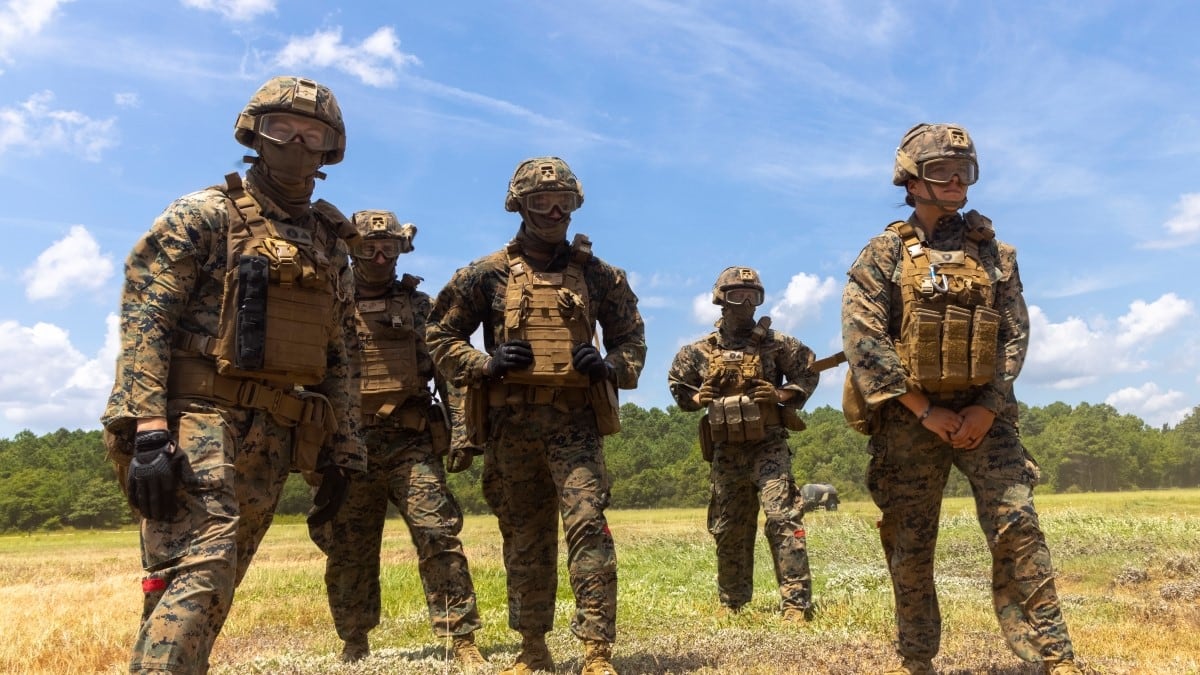Marine Commandant Gen. David Berger observed recently that logistics has gotten less public attention than other aspects of Marine Corps modernization, because, well, it’s simply less exciting.
“What’s not so cool to talk about: logistics,” he said March 14 at the National Press Club. “But if you were trying to counter the United States right now militarily, I think you would go after our logistics. We’re not overconfident, but, frankly, since World War II, no one has challenged our logistics.”
But that lack of challenge is no longer the case. A technologically sophisticated adversary like China could put pressure on the force’s logistics system, Marine officials say.
With that in mind, the Marine Corps in February announced through the release of the Installations and Logistics 2030 report that it was making far-reaching changes to how it approaches logistics. Now, the Corps is setting some of those changes into official doctrine.
RELATED

The service on Tuesday published Marine Corps Doctrinal Publication 4, an updated version of logistics doctrine from 1997. The new doctrine rehashes some of the concepts from Installations and Logistics 2030, but it is focused less on concrete plans and more on the philosophy of logistics.
“This publication is intended for all Marines. … It is designed to be read from cover to cover, and to be immediately applicable,” proclaims Berger’s preface to the more-than-130-page document (not including footnotes).
In a future conflict, logistics would likely be contested. A single precision strike could now take out a supply ship or a factory, so Marines will increasingly have to get their supplies through diverse networks, according to the doctrine — “supply webs” rather than supply chains.
Another complication: The Marine Corps’ broader force reorganization calls for small groups of Marines to be dispersed in challenged areas, both at sea and close to shore. Supplying and sustaining those Marines could get tricky.
Some things haven’t changed since then-Commandant Gen. Charles Krulak signed the 1997 doctrine.
The Marine Corps still conceives of logistics as both an art and a science. It’s still important, according to the new doctrine, for logisticians to get good training and develop attention to detail.
Not in the 1997 document, however, is the update’s emphasis on “human-machine teams.”
“Emerging technology such as unmanned platforms, artificial intelligence, machine learning, additive manufacturing, and wireless and other advanced connectivity have the potential to increase the speed and tempo of war,” the new doctrine reads.
Logisticians should use technology to help assess troops’ demand for new supplies, it says. But it also indicates the service should work to reduce demand in the first place: by forward-positioning more supplies, partnering with host nations and sister services, and making Marines more self-sufficient.
Self-sufficiency, in some cases, could mean hunting or foraging.
“How do you skin a goat or a cow that perhaps you may have purchased off of the local environment, and then turn that into food that is edible for your own troops?” said Col. Aaron Angell, executive assistant to the deputy commandant for installations and logistics, on a call with reporters.
But the new doctrine isn’t just about methods and technology.
It’s also about making sure that logistics personnel are properly trained and retained in jobs they are good at. That extends beyond logistics personnel — it’s a goal of the Corps’ overarching “talent management” initiative.
“We’re trying to develop Marines who are critically thinking through as many options as they can and then giving them the ability to decide which option is most appropriate for them in that particular operational scenario,” Angell said.
Irene Loewenson is a staff reporter for Marine Corps Times. She joined Military Times as an editorial fellow in August 2022. She is a graduate of Williams College, where she was the editor-in-chief of the student newspaper.





